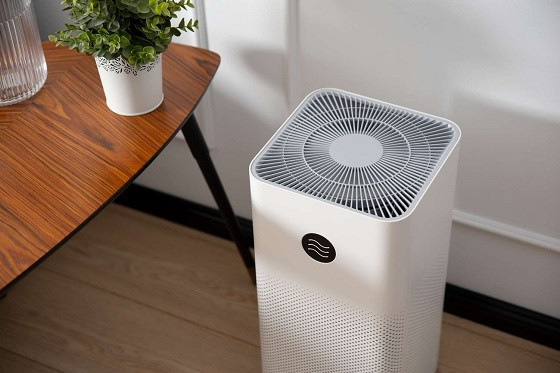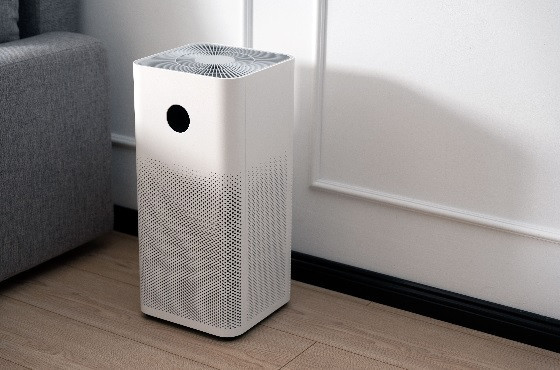views
Breathe Cleaner Indoors with Effective Dust Control
Indoor air quality plays a crucial role in maintaining overall health and comfort, especially as more people spend the majority of their time indoors—whether at home or in workplaces. Among the most common indoor air pollutants, dust remains a persistent and often underestimated concern. From visible particles that settle on furniture to microscopic fragments that float in the air, dust can significantly impact respiratory health, indoor cleanliness, and even the performance of electronic devices. In recent years, the use of air purification technologies has gained popularity as an effective solution to tackle airborne particulates, especially dust.

Understanding Indoor Dust and Its Composition
Dust is more than just an annoyance; it's a complex mixture that includes dead skin cells, pollen, fabric fibers, pet dander, soil particles, mold spores, bacteria, and even microscopic pieces of plastic. Depending on the geographic location, indoor activities, and number of occupants in a space, the composition of dust can vary significantly. In homes and offices, dust settles on every surface and can become airborne with the slightest movement, such as walking, sweeping, or even just a gust from a fan.
Inhaling dust particles can irritate the respiratory system and trigger symptoms in individuals with allergies, asthma, or other respiratory conditions. Moreover, long-term exposure to dust-laden environments may lead to chronic respiratory discomfort, fatigue, or other health complications, especially in sensitive individuals like children and the elderly.
The Role of Air Purification in Dust Control
Air purification is no longer considered a luxury, but a necessity in many homes and office environments. This is especially true in urban areas with high levels of construction or vehicle emissions that contribute to indoor dust levels. The function of an air purifier is to draw air through a series of filters or other purification mechanisms, trapping or neutralizing airborne particles, and then releasing the clean air back into the environment.
When it comes to controlling indoor dust, air purifiers equipped with HEPA (High-Efficiency Particulate Air) filters are widely recommended. These filters are capable of trapping 99.97% of particles as small as 0.3 microns, including common dust elements. In addition, air purifiers may also feature pre-filters to capture larger particles like lint or pet hair, extending the life of the primary HEPA filter and enhancing overall performance.

Choosing the Right Air Purifier for Dust Control
Selecting an air purifier for dust is not just about picking a device with high ratings or a sleek design. It requires careful consideration of the specific needs of the environment in which it will be used. Here are a few critical factors to consider when evaluating air purifiers for dust removal:
Room Size Compatibility
Air purifiers are designed for specific room sizes, and using a unit in a space larger than it’s intended for will reduce its effectiveness. The Clean Air Delivery Rate (CADR) rating, typically listed on the packaging, provides a reliable measure of how efficiently a purifier can remove dust from a particular size room.
Filter Type and Efficiency
As mentioned earlier, HEPA filters are the gold standard for dust removal. However, some models include additional features like activated carbon filters for odor control or ultraviolet lights for microbial neutralization. For dust control specifically, HEPA and pre-filter combinations offer the best performance.
Noise Levels
Air purifiers operate continuously, so it’s important to consider noise output—especially in bedrooms or quiet office spaces. Units that provide multiple fan settings or "sleep mode" functionality can help maintain a peaceful environment while still performing efficiently.
Maintenance Requirements
Filters need to be replaced periodically to maintain optimal performance. Knowing the replacement frequency and associated costs helps in assessing the long-term feasibility of an air purifier. Some models also include filter-change indicators for user convenience.
Air Changes Per Hour (ACH)
This metric tells you how many times the purifier can clean the entire volume of air in a room per hour. For effective dust control, especially in spaces prone to high dust accumulation, a higher ACH rating is preferable.
Benefits Beyond Dust Removal
Using an air purifier for dust offers more than just a cleaner appearance and less frequent cleaning. The benefits span across multiple areas of daily life and well-being:
Improved Respiratory Health
By removing dust and allergens from the air, purifiers reduce the burden on the respiratory system. This is especially beneficial for people with asthma, allergies, or chronic sinus issues. Cleaner air can mean fewer health flare-ups, reduced reliance on medication, and an overall higher quality of life.
Better Sleep and Productivity
Dust and allergens in the air can interfere with sleep quality by causing nighttime coughing, sneezing, or congestion. Similarly, in work environments, improved air quality has been linked to increased concentration, reduced fatigue, and higher productivity levels.
Enhanced HVAC Efficiency
Dust buildup in HVAC systems can reduce efficiency and increase energy consumption. Using an air purifier helps prevent excess dust from circulating through the ventilation system, potentially extending the lifespan of HVAC units and reducing maintenance needs.
Preservation of Indoor Items
Dust not only impacts health but can also degrade electronics, artworks, furniture, and textiles over time. Continuous dust exposure accelerates wear and tear, particularly in sensitive equipment and decor. An effective air purifier helps in prolonging the lifespan and appearance of such items.
Ideal Locations to Use Air Purifiers
To maximize the dust-removal benefits of an air purifier, placement is crucial. Here are a few strategic locations to consider:
-
Bedrooms: Since people spend one-third of their lives sleeping, having clean air in the bedroom is essential.
-
Living Rooms: These are often high-traffic areas where dust accumulation is greater.
-
Offices: Especially in shared workspaces, controlling airborne particles can contribute to better health and reduced absenteeism.
-
Near Entry Points: Placing an air purifier near doors and windows can help intercept dust from outside before it spreads indoors.
Complementing Air Purification with Other Dust Control Strategies
While air purifiers are effective, they work best as part of a comprehensive indoor air quality strategy. Here are some additional tips for minimizing dust accumulation:

-
Vacuum frequently using a vacuum cleaner with a HEPA filter.
-
Replace HVAC filters regularly.
-
Use doormats and remove shoes before entering to reduce outdoor dust tracking.
-
Minimize clutter that collects dust.
-
Choose easy-to-clean furniture and flooring surfaces.
Sustainable Air Quality Management
Modern consumers are increasingly conscious of energy use and environmental impact. Many air purifiers now come with energy-efficient settings, auto-off timers, and eco-friendly certifications. These features not only reduce operational costs but also support a sustainable approach to indoor air quality management.
In addition, the rise of smart home technology has introduced Wi-Fi-enabled purifiers that allow users to monitor air quality, change settings, or receive maintenance reminders remotely through mobile apps. These advancements have made it easier than ever to stay proactive about dust control.
Dust is an unavoidable part of indoor life, but it doesn’t have to compromise your health or living environment. Choosing an effective air purifier and integrating it into a broader dust management routine can transform the air quality in your home or workplace. With the right tools and practices in place, it’s possible to breathe easier and live cleaner every day. Name: EcoTechWorld Inc.





















Comments
0 comment